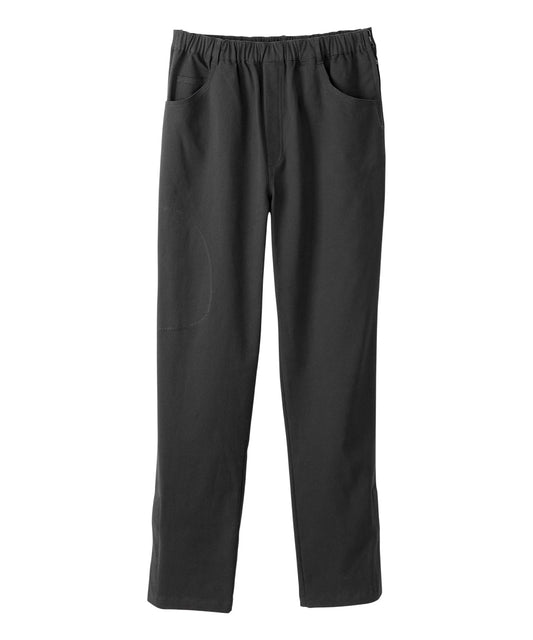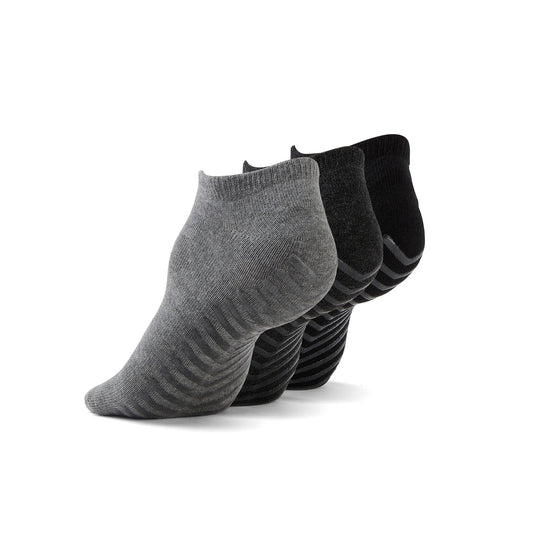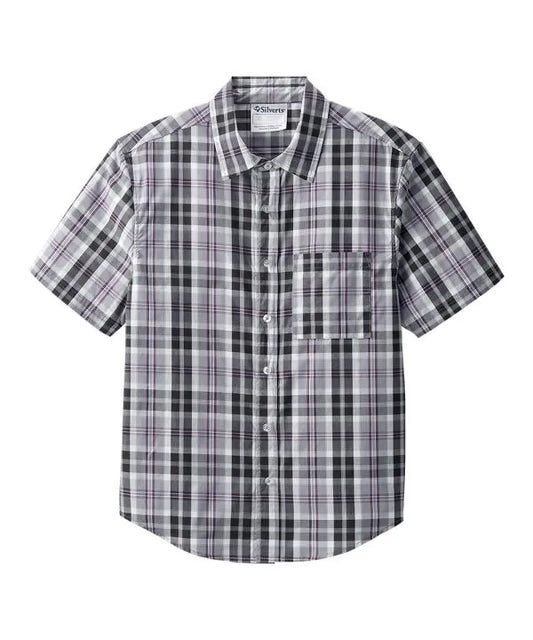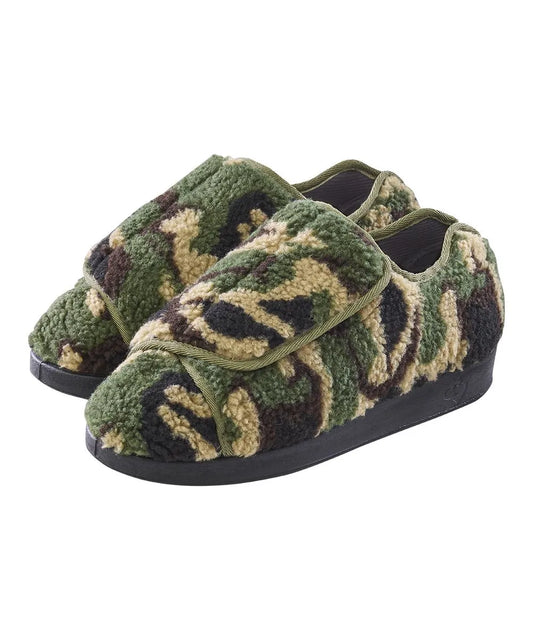Written By: Zuhair Augla
Photo By: Kaegan Henman
Introduction
For individuals with muscular dystrophy, the everyday task of choosing and dressing in apparel can be incredibly arduous and goes beyond the domain of fashion. Muscular dystrophy, a collection of genetic diseases entailing muscle degeneration and progressive muscle weakness, impinges on physical ability and can render regular clothing constricting, painful, or even unusable. As a response, adaptive clothing has become an essential tool that addresses the unique requirements of individuals with muscular dystrophy and allows them to preserve style and independence. This guide explores the difficulties of selecting clothing, how adaptive clothing offers flexibility and unobtrusive support, the cutting-edge design elements that minimize physical effort, and how adaptive clothing can be highly functional and fashionable.
What Specific Challenges Do Individuals with Muscular Dystrophy Face When Selecting Clothing?
Having muscular dystrophy comes with a myriad of complications that transform the easy task of dressing into an ordeal. The progressive muscle weakening leads to limited mobility and weak hands, rendering activities like buttoning buttons, zipping zippers, or tying shoelaces far more complex than they would be for an individual without such limitations. Most conventional clothing is designed without consideration for the varied range of motion or the need for additional ease in the dressing process. The rigidity of the materials and the restrictions of set tailoring can exacerbate discomfort or even restrict movement, creating a feeling of constriction instead of freedom.  This women's active top found on the JuneAdaptive website is just the right choice for individuals looking for a top with a soft touch and is well suited for individuals with sensitive skin.
This women's active top found on the JuneAdaptive website is just the right choice for individuals looking for a top with a soft touch and is well suited for individuals with sensitive skin.
Besides their physical limitations, muscular dystrophy patients also often grapple with the problems of fatigue. What might be an easy task for someone with normal muscle strength can be exhausting for those with compromised muscle function. The effort involved in coordinating expected closures and making adjustments in apparel can add to frustration and encroach upon independence. A second major challenge is that apparel too often does not adjust for shifting body contours that can be the product of muscle wasting or the use of assistive devices like braces or prosthetics. Consequently, standard sizing and traditional cuts often do not offer a good fit, resulting in problems like chafing, tightness or unflattering fabric.
Moreover, sensory sensitivities may also occur; the texture of some fabrics or the seams may rub against weakened muscles, and vulnerable skin may evoke irritation or pain. These issues highlight the necessity for apparel thoughtfully created to meet the evolving and complicated demands of those with muscular dystrophy.
How Can Adaptive Clothing Accommodate the Need for Flexibility and Gentle Support?
Adaptive apparel has been created with the understanding that flexibility and gentle support are critical for individuals with muscular dystrophy. Apparel created with adaptive design principles includes features that optimize the range of motion while making the level of support that can help alleviate discomfort. A key feature of such designs is fabrics that provide elasticity and breathability. Stretch fabrics, such as spandex-enhanced cotton blends or thin performance fabrics, enable the garment to move harmoniously with the body, providing an ease of movement that never feels restrictive. This exceptional flexibility is crucial for everyday activities, keeping the wearer free from obstruction while performing everyday tasks like reaching, bending, or sitting.
Besides, adaptive apparel is frequently crafted with careful cuts and construction to provide gentle support where it is most required. For instance, integrated supports and specially shaped panels can help maintain posture while adding extra stability in the shoulder and lumbar regions. These design elements subtly redistribute pressure to eliminate areas of tension that can otherwise cause fatigue or discomfort. Also, most adaptive clothing features adjustable details, like drawstrings, elastic waistbands, and adjustable straps that enable a customized fit. This flexibility makes up for variations in muscle tone or body shape and keeps the garment comfortable all day long, no matter how active the wearer is.
In What Ways Do Innovative Design Features Help Reduce Physical Strain for Those with Muscular Dystrophy?
The design innovations of adaptive clothing are crucial for eliminating the physical stress the muscular dystrophy patient must endure daily. The most crucial innovation in the field is the creation of alternative closure systems. The usual buttons and zippers, which involve some strength and dexterity, have been replaced by magnetic closures, Velcro fastening, and snap systems. Such features simplify management and eliminate the repetitive motion, exacerbating muscle fatigue. By consolidating the dressing process, these features minimize physical stress on the wearer, enabling them to preserve energy for additional activities.
Another innovation that has dramatically reshaped the scene is the use of ergonomic design in the science of garment making. Adaptive apparel is now created with an increased awareness of human movement, including gussets, articulated seams, and stretch panels strategically located throughout. These thoughtful details enable the fabric to move more in tune with the body, minimizing resistance and friction that can cause discomfort or strain. For individuals who have muscular dystrophy, even a slight decrease in physical exertion can significantly enhance their overall comfort. Combining these reduced stress levels over time can conserve energy and help decrease muscle tiredness.
Besides, incorporating adjustable elements allows apparel to be tailored perfectly to meet the person's needs. Elastic panels and adjustable waistbands, for instance, create a slimmer appearance and allow for body changes throughout the day. This is so comfort in the wear is maintained even as muscle tone or body shape changes. In addition to such structural elements, lightweight and breathable fabrics are essential in alleviating strain. By minimizing the garment's overall weight and improving airflow, adaptive apparel prevents overheating and sweating, a challenge that can be incredibly exhausting for individuals with muscular dystrophy.
The focus on reducing physical effort is seen in the design of clothing that is easy to access, especially for individuals who rely on caregivers. Adaptive clothing typically includes large openings, loose necklines, and side or back closures, all designed to make dressing as straightforward as possible with minimal stretching and bending. Such thoughtfully incorporated design elements promote independent dressing and make the process more respectful and dignified for the wearer. In summary, the innovative design elements of adaptive clothing greatly minimize the physical effort of dressing by facilitating more straightforward closures, improving garment structure, and providing a comfortable, adjustable fit.
How Can Adaptive Garments Be Both Functional and Fashionable for Individuals with Muscular Dystrophy?
Adaptive apparel is more than function; it enables individuals with muscular dystrophy to dress however they desire without sacrificing style. Newer adaptive clothing is designed to be functional and fashionable, combining medical requirements with the aesthetics of contemporary fashion. Designers are now more committed to creating products that have strict functional requirements but still remain stylish and appealing, thereby allowing people to feel beautiful and confident as they go about their daily lives.
Adaptive clothing has advanced considerably due to increased awareness of the role of inclusiveness in fashion. As a result, designers are now adding details like vibrant hues, contemporary silhouettes, and refined detailing to garments formerly classified as strictly functional. New adaptive clothing lines provide diverse choices, from casual to dress wear, that will appeal to various tastes and interests. This change in attitude has redefined adaptive wear, moving it from a category that was once medical or specialty clothing to a stylish option that anyone can be proud to wear.
A great example of this balance of practicality and style is seen in clothing design with clever closures that seamlessly integrate with their high-style designs. Magnetic clasps and discreet Velcro panels have been incorporated into these garments, increasing their desirability without diminishing their overall style. This jacket with magnetic closures is excellent for fashionability and accessibility. It can be found on the JuneAdaptive website.
This jacket with magnetic closures is excellent for fashionability and accessibility. It can be found on the JuneAdaptive website.
Far from being strictly functional, they are made to be fashionable, with many lines including contemporary design features that accommodate current fashion trends. Adjustable waists, variable fits, and innovative tailoring techniques allow the garment to flatter the body's contours and adjust to its special requirements. People with muscular dystrophy want this ideal union of form and function, as they wish to wear clothing that respects their life and personal style. Furthermore, the heightened collaboration among designers, engineers, and the muscular dystrophy community has provided a more profound appreciation of what truly defines adaptive fashion. Through hearing the stories of individuals who wear these garments daily, designers can develop items that solve functional problems and connect emotionally. The clothing that comes from this project is undeniably empowering, confirming the notion that fashion is for all, regardless of physical limitations. With meticulous attention, adaptive wear transcends the sphere of need; it is a vibrant expression of individuality and strength.
Conclusion
Adaptive clothing for individuals with muscular dystrophy is a remarkable fusion of style, comfort, and innovation. It tackles the unique issues of these individuals by offering apparel that simplifies dressing, caters to limited mobility, and offers cushioned support. By strategically employing comfortable, pliable materials, alternate mechanisms of closure, and ergonomic design principles, these adaptive clothing items significantly decrease bodily stress while simultaneously enhancing overall comfort and mobility.
Contemporary adaptive fashion demonstrates that form and function can work together in harmony. Designers create apparel that combines function and fashion, enabling individuals to express themselves and own their appearance. The delicate balance between form and function is developed through innovative design details imperceptibly integrated into contemporary fashion. Thus, adaptive apparel meets the demands of daily life and celebrates identity.















